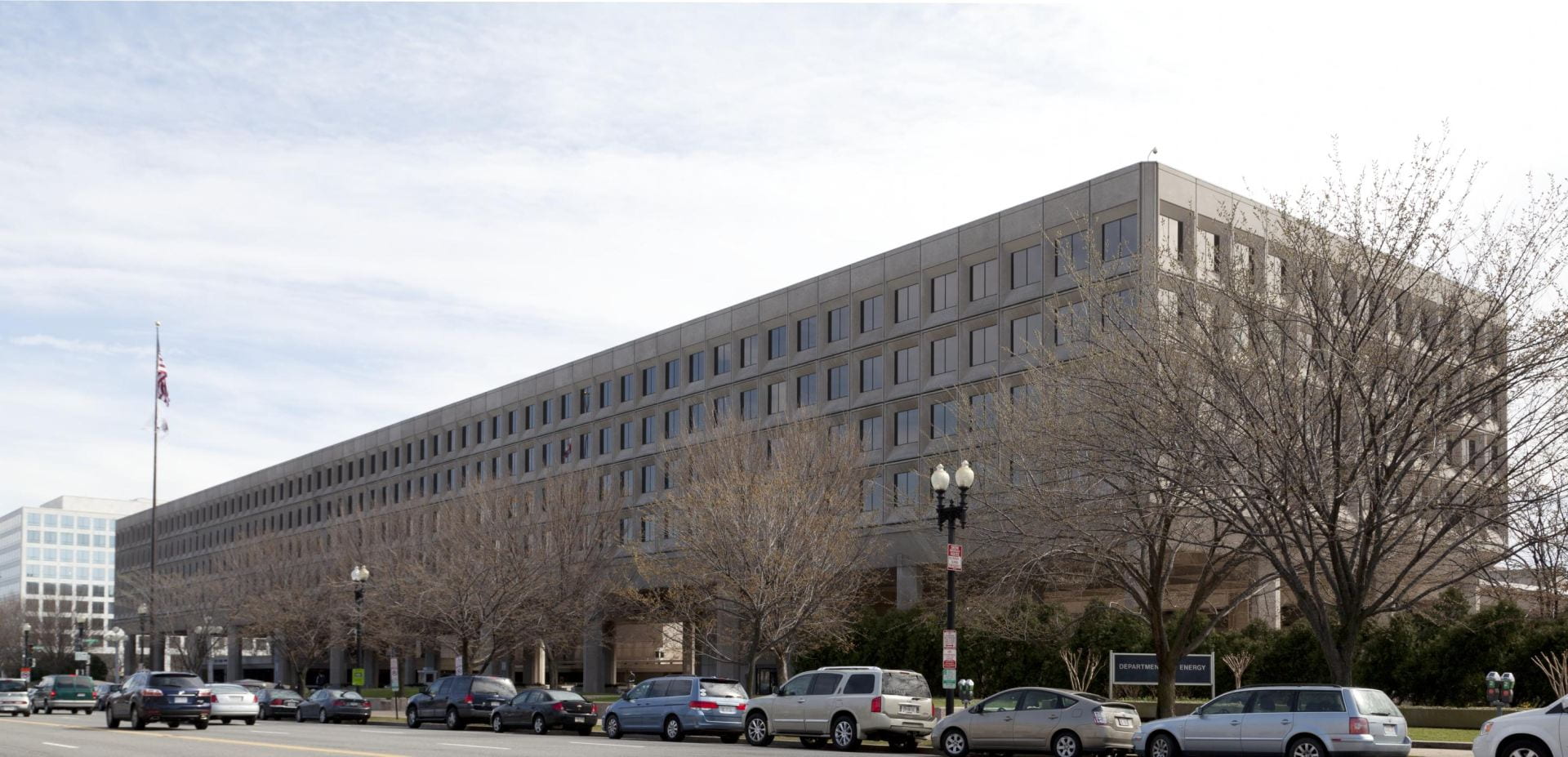Renewable News Digest, August 2023: Solar Power
by Aaron Fernando

A birds-eye view of solar panels in a green space. Photo credit: Anders J via Unsplash
Climate change is in the news every day now, with a lot of attention being drawn to disasters like fires and floods, as well as aspirations and promises at conferences and summits.
But here on the CCE Tompkins’ Energy and Climate Change blog, we’d like to just focus on one topic for now, to help contextualize things. In subsequent weeks or months, we’ll put out updates on different areas in this type of digest form.
And if anything in here inspires you to take action on climate in your life, you can visit our regional energy hub’s page, Smart Energy Choices.
So this month, here are six recent stories on the local, national, and international solar scene that’ll keep you in the know.
1. First Solar will invest over $1.1 billion to build its fifth US solar factory (CNBC)
First Solar—the biggest US solar manufacturer—has announced that it plans to build a solar manufacturing facility near Iberia Parish, Louisiana, at the Acadiana Regional Airport. Construction is expected to finish up by 2026, and the operation will create over 700 new jobs in the area.
According to Reuters, “Solar project developers in the U.S. have flocked to First Solar’s cadmium telluride products partially because the technology does not rely on polysilicon, a raw material primarily made in China and used in the vast majority of panels.”
Currently, China is the biggest manufacturer of solar panels in the world, and it holds this position with a significant lead: currently three out of every four finished solar modules or panels produced in the world are produced in China. However, manufacturing of Chinese solar panels comes with some serious ethical implications, especially in the Uyghur Region, where China has been conducting many human rights abuses, including forced labor.
According to a recent report from researchers out of Sheffield Hallam University, in 2022, 35% of polysilicon, globally, came from the Uyghur region, which was down 10% from two years prior. However, the share of polysilicon coming from elsewhere in China went up significantly during that time. For many years, the US has maintained trade restrictions on Chinese solar producers due to the known connection to human rights abuses.
2. Texas’ grid has been stressed, but solar is helping out (CNN)
Much of the country experienced heat waves in June and July, and during these heat waves, Texas was hit with regular triple-digit temperatures.
During these heat waves, Texas’ grid experienced an all-time high in demand. As demand peaked during these high-temperature days, solar provided one-fifth of the energy for the state of Texas. Currently, Texas has the second most solar power generation of any state according to the Solar Energy Industries Association, only behind California.
However, due to the strain on the electrical grid, in early August, electricity rates briefly shot up 800%. Texas operates its own grid, unlike any other state in the contiguous United States.
3. Cornell studies ecological effects of floating PV panels (Cornell Chronicle)

Adding solar panels to a pond in July, Steve Grodsky, left, and doctoral student Caitlin Davis aim to understand how floating photovoltaic panels affect the biology of the water. Photo credit: Jason Koski/ Cornell University
Closer to home, near the Ithaca airport, Cornell has an experimental research facility comprised of many artificial ponds where researchers study a variety of factors that can affect pond ecosystems, from soil runoff and frog behavior, to fish populations and invasive species.
One study—started in June of 2023 and currently underway at the facility—will be paying close attention to how floating arrays of solar panels affect the ecosystems they are installed within.
According to the Cornell Chronicle:
“Specifically, the project will examine how floating solar panels on the research ponds affect the abiotic and biotic parts of water; and how microbes, macroinvertebrates (snails and crayfish), macrophytes (aquatic plants) and fish fare. The researchers will track the ponds’ greenhouse gas emissions, summertime algae growth, bioacoustics and environmental DNA.”
Currently, less than one percent of all solar installations, globally, are floating arrays, but there is much potential in this type of installation, especially for regions and entities that have limited land where panels can be placed.
4. Nevada shows states how to build workforce for solar energy boom (Grist)
In order to actually transition off fossil fuels, the US needs a much larger workforce to install solar panels and arrays, and upgrade grids. Currently, the lack of workforce is a roadblock, slowing down our much-needed aspirations to decarbonize.
But Nevada has the highest per-capita rate of solar workers, and is now working on building out the largest solar project in U.S. history. The project, known as Gemini, is expected to be half the size of Manhattan, power over over a quarter million homes, and construction should be completed by the end of this year.
A useful national statistic from the article:
“The Solar Energy Industries Association says about 800,000 new workers will be needed in less than a decade. That’s to push the nation’s electricity generation from solar to 30% by 2030. Solar accounted for less than 4% last year.”
5. DOE to provide $450 million for solar panels for the most vulnerable and remote Puerto Ricans (Grist)

The Forrestal Building in Washington, D.C. where many of the Department of Energy’s offices are housed. Photo Credit: Carol M. Highsmith/ Library of Congress
You may remember that when Hurricane Fiona hit Puerto Rico in September 2022, the whole island experienced a blackout. In fact, a couple weeks later, over a hundred thousand Puerto Ricans were were still living without power. In 2017, when Hurricane Maria hit the island, it took almost a year for the power to be restored.
To address this, the US government launched the Puerto Rican resilience fund to modernize and decarbonize the grid in Puerto Rico. As part of that effort, the Department of Energy is committing $450 million to the island, directed toward the lower-income households and most vulnerable residents, specifically to install solar panels in difficult-to-access areas.
According to the above-linked article in Grist, “[the funds] will be reserved for people who are medically vulnerable and depend on plug-in medical equipment, and those who live in ‘last-mile’ communities, mostly located deep in the main island’s central mountain range.”
The rollout of this program was also shaped by feedback from local residents: “The program’s structure was in large part shaped by a vigorous community outreach campaign led by [Energy Secretary Jennifer] Granholm. In the last year, she has been to Puerto Rico five times to gather input from Puerto Ricans at town halls and roundtables.”
6. Biden has low ratings on climate, but it may be because of Americans’ lack of awareness of the IRA (Washington Post)
A poll conducted by the Washington Post and the University of Maryland found that 57% of people disapprove of Biden’s handling of the climate crisis. However, it also found that most respondents also did not know much about the Inflation Reduction Act (IRA) or knew nothing at all about it.
Looking into the data on solar, specifically, two-thirds of respondents had not heard or read much (or anything) about how the IRA expanded tax credits to install solar panels.
However, two-thirds of respondents also supported an increase in tax credits to install solar.
So, even if those two populations completely overlap (and they almost certainly do not) that means that a full third of people in the US both support expanded tax credits to install solar but also don’t really know how that the IRA contains these types of expanded tax credits. Most likely, that portion is higher than one-third.
7. What About You?
So there are a lot of reasons to be excited about the clean energy future that solar can bring us. If you’d like to be a part of making this future happen, and learn more about if installing solar might be possible for you, you can visit Smart Energy Choices.
Smart Energy Choices is a project of CCE Tompkins that connects residents with the people, resources, and contractors that you need to get started on installing solar or taking other steps to lowering your emissions
If you’re a renter, live in a condo, can’t afford the installation and panels, or for any number of other reasons, you can still engage with solar power through options like subscription solar.

Or if you just want to think things through, we have Community Energy Advisors who can help you understand different options, and find incentives and tax benefits. If you’re in Tompkins County, your Clean Energy Advisor is Leigh Miller (pictured), who can be reached at (607) 272-2292 x262 or lvm9@cornell.edu
Bonus
If you read this far, you deserve a little reward. So here it is: a brilliant 1979 track forecasting the clean, bright energy of the future. As the prophet speaks in this hit single:
“The chance to change has nearly gone
The alternative is only one
The final source of energy:
Solar electricity”
